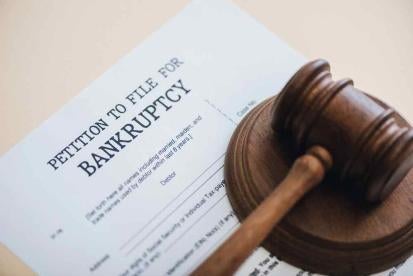The confluence of the COVID-19 pandemic, high inflation, and increased borrowing costs culminated in countries incurring record levels of debt.[1] Despite this global debt crisis, there is currently no comprehensive set of rules or body of law to govern the restructuring of sovereign debt. Instead, when a sovereign restructures its debt, it is usually guided by contractual collective action clauses (“CACs”) through which bondholders agree to be bound by a restructuring proposed by a sovereign if a specified majority of bondholders approves the proposal.
Until now. New York is now taking a stab at improving the mechanisms available to sovereigns restructuring their debt. This comes as no surprise, because New York law governs approximately half of all sovereign bonds issued globally.[2] The New York legislature is considering three types of reforms to its law governing sovereign debt: (i) a comprehensive mechanism for restructuring sovereign debt;[3] (ii) limits to recovery on certain sovereign debt claims;[4] and (iii) changes to the champerty defense.[5]
A Comprehensive Mechanism for Sovereign Debt Restructuring
The most ambitious proposal is Article 7 of the New York Banking Law that would impose a voting mechanism akin to those imposed by CACs on sovereign debt restructurings governed by New York law. Under the proposed reform, the sovereign would be required to file a petition containing certain certifications including that its debt is unsustainable absent the requested relief and that it is working with the International Monetary Fund (“IMF”) to devise a path back to sustainability.[6] If the sovereign decides to file a petition under Article 7, it must submit all of its New York law-governed debt. From there, the sovereign would submit to creditors its proposed plan, subject to certain rules about the classes of claims and order of priority for repayment.[7] These creditors would then vote on the plan, and if approved by at least two-thirds of claims by amount and over half by number in each class, the plan would be binding and the sovereign would be discharged from all New York law-governed claims as provided in the plan.[8]
The reforms also provide for an “independent monitor” appointed by the governor and acceptable to the sovereign and the majority holders of New York-governed sovereign debt.[9] The purpose of the independent monitor is to facilitate and encourage an effective, prompt, and fair agreement by the parties.[10] The independent monitor can dismiss a petition for “lack of good faith”[11] and request a court of competent jurisdiction to appoint a referee or special master to make recommendations regarding the resolution of disputes arising under Article 7.[12]
While ambitious, proposed Article 7 is vulnerable to constitutional challenges. First, opponents are likely to raise federal preemption issues. The Supremacy Clause contained in Article VI, Section 2, of the U.S. Constitution renders invalid a state law where, inter alia, federal law is so pervasive that it would be reasonable to infer that Congress left no room for states to supplement it or the federal interest is so dominant that it is assumed to preclude the enforcement of state laws on the same subject.[13] The Bankruptcy Code already provides a comprehensive regime for dealing with restructurings, and Article 7 may also impinge on the paramount federal interest in foreign affairs. Both may be cited in support of the argument that Article 7 is preempted. Second, the Contracts Clause contained in Article I, Section 10, of the U.S. Constitution prohibits states from enacting laws that substantially interfere with contractual obligations without a legitimate public purpose.[14] Proposed Article 7 may violate the Contracts Clause by retroactively applying its provisions to existing contracts and altering parties’ obligations therein.
Limits to Recovery on Certain Sovereign Debt Claims
The proposed laws also seek to limit recovery on claims against sovereigns participating in certain international initiatives aimed at providing debt relief. Those claims would only be recoverable where burden-sharing standards[15] and robust disclosure standards[16] are met.[17] Eligible claimholders will be limited to recovering only what the federal government would have been able to recover under the applicable international initiative if it were a creditor.[18]
Changes to the Champerty Defense
Champerty occurs when a third party maintains a suit in return for a financial interest in the outcome.[19] In New York, champerty is significantly limited by section 489 of the New York Judiciary Law which, subject to certain conditions, prohibits a person or entity from acquiring debt “with the intent and for the purpose of bringing an action or proceeding thereon.” This applies to debts traded on the secondary market, such as sovereign debt, that have an aggregate purchase price of less than $500,000.
Champerty has almost been rendered inapplicable as a litigation defense due to the courts’ narrow interpretation of section 489.[20] However, the proposed changes could see the champerty defense make a comeback in the sovereign debt space by: (i) removing the $500,000 exemption threshold; (ii) imposing a duty on sovereign debt claim holders to participate in a qualified restructuring[21] in good faith; and (iii) allowing a plaintiff’s intent and purpose in bringing a sovereign debt claim to be inferred based on its (a) history of acquiring claims at a significant discount and bringing actions to enforce those claims, (b) refusal to participate in a consensual settlement of similar claims, and (c) other facts or circumstances the court considers relevant.[22]
Looking Ahead
New York’s proposed laws will likely be welcomed by those countries struggling with the increasing pressure of unsustainable sovereign debt. However, due to the increased risk to potential creditors, the proposed laws may adversely affect those sovereigns in other ways. Investors may be less likely to trade distressed debt on the sovereign debt market, pushing distressed sovereigns to take on higher interest rates to secure prospective investors. Borrowing costs may also rise and hurt the poorest of countries. It remains to be seen whether or not New York will pass the proposed laws. It also remains unclear how such laws will affect the way sovereign debt restructurings are resolved moving forward.
[1] The Institute of Finance states that global debt is $45 trillion higher than before the pandemic and is expected to continue rising.
[2] New York law governs approximately half of all sovereign bonds issued globally.
[3] Assembly Bill A2102A dated January 23 2023 and Senate Bill S5542 dated March 8, 2023 (“Assembly Bill A2102A”).
[4] Assembly Bill A2970 dated February 1, 2023 and Senate Bill S4747 dated February 14, 2023 (“Assembly Bill A2970”).
[5] Assembly Bill A5290 dated March 7, 2023 and Senate Bill S5623 dated March 9, 2023 (“Assembly Bill A5290”).
[6] See Assembly Bill A2102A § 1 for the full list of certifications.
[7] Assembly Bill A2102A § 1.
[8] Id.
[9] Id.
[10] Id.
[11] Assembly Bill A2102A does not provide a definition for “good faith.”
[12] Assembly Bill A2102A § 1.
[13] Gade v. Nat’l Solid Wastes Mgmt. Ass’n, 505 U.S. 88, 98 (1992).
[14] Home Bldg. & Loan Ass’n v. Blaisdell, 290 U.S. 398, 431, 434-35 (1934).
[15] See Assembly Bill A5290 § 2 which defines “burden-sharing standards” as standards set by the relevant international initiatives for equitable burden-sharing among all creditors with material claims on each participating debtor without regard for their official, private, or hybrid status.
[16] This includes a broad presumption in favor of public disclosure of material terms and conditions of such claims.
[17] Assembly Bill A2970 § 2.
[18] Id.
[19] In re Primus, 436 U.S. 412, 424 n. 15 (1893).
[20] See, e.g., Elliott Associates, L.P. v. Banco de la Nacion, 194 F.3d 363, 372 (1999) where the court found that section 489 of the New York Judiciary Law will not be violated where the primary goal of the suit is the collection of the debt acquired.
[21] See Assembly Bill A5290 § 3 which defines a “qualified restructuring” as one accepted by no less than two-thirds in amount and more than half in number of holders where the IMF has assessed that a sovereign’s debt is unsustainable.
[22] Assembly Bill A5290 § 2.
[23] To obtain additional information on Squire Patton Boggs’ experience in the sovereign debt restructuring practice, please click here.




 i
i


